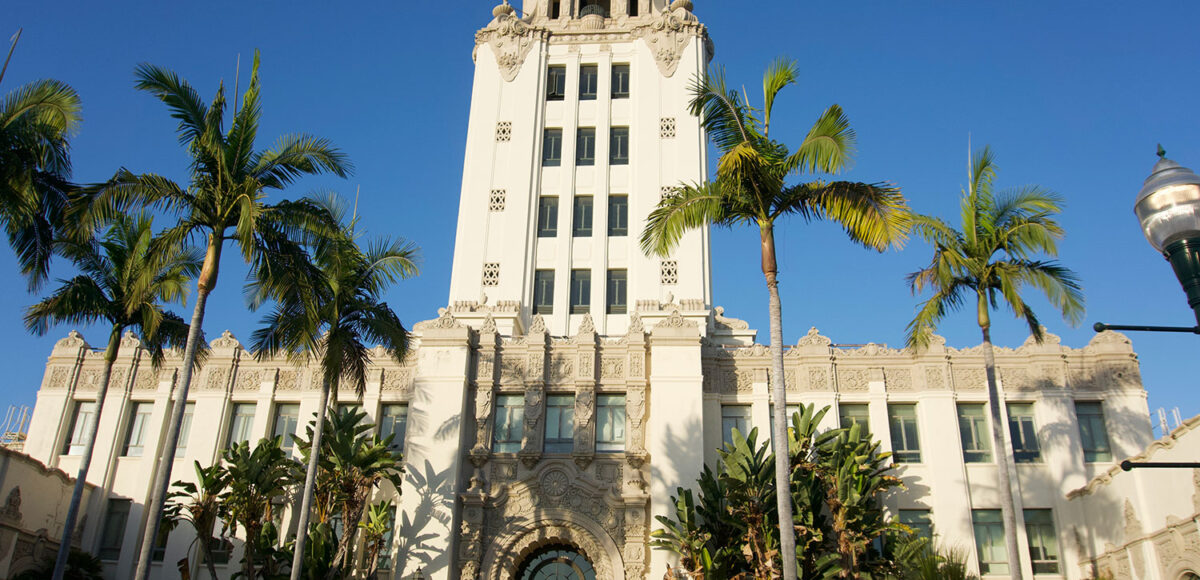During its Nov. 19 Study Session, the City Council considered traffic calming issues regarding Clifton Way and Coldwater Canyon Drive. Jessie Holzer Carpenter, a transportation planner for Beverly Hills, reported results of a traffic-calming study on Clifton Way between Robertson and La Cienega boulevards. The study involved the placement of two traffic circles and four curb extensions along Clifton Way. The city then collected data on vehicle speeds as well as compliance with stop signs.
A community survey contained in the report indicated that traffic circles were more favorable than curb extensions. Out of the 214 responses, 52% stated the traffic circles were successful, compared to 40% who believed the curb extensions were successful. A majority of those surveyed supported keeping the traffic circles and curb extensions.
According to the report, traffic decreased by 1% after the calming measures were installed. Vehicle speeds remained about the same, but the maximum speeds recorded on Clifton Way decreased from the 45-50 mph range to the 35-40 mph range. Stop sign compliance was modestly improved as well.
The Traffic and Parking Commission voted unanimously to continue the project at its Nov. 7 meeting. “We need to make sure we have community buy-in,” Vice Mayor Sharona Nazarian said at the Study Session, citing concerns residents may not be aware of potential changes to the intersections.
The council agreed to continue the Clifton Way study with narrower curb extensions. One intersection will receive the smaller curb extension, one curb extension will be removed, and one of the extensions will be converted to a traffic circle. “I don’t like the curb extensions at all, but I think if we’re testing we should test,” Mayor Lester Friedman said.
The Study Session also looked at the number of pedestrians who cross five intersections along Coldwater Canyon Drive. It compared that to traffic collisions at those intersections. Those findings revealed that none of the intersections met the established criteria for installing traffic signals or stop signs. They did, however, warrant the consideration of pedestrian hybrid beacons.
The intersections studied for crosswalk feasibility were at Coldwater Canyon Drive and Loma Linda Drive, Lindacrest Drive and Monte Cielo Drive.
The council determined that one pedestrian hybrid beacon should be installed on Coldwater Canyon Drive at a site to be determined by further study. A pedestrian hybrid beacon, also called a “HAWK” signal, is a lighting device that remains dark until activated by a pedestrian. When activated, it displays yellow lights to warn drivers to prepare to stop. When pedestrians see a signal telling them to walk, the lights on the roadway flash red requesting drivers to stop.







